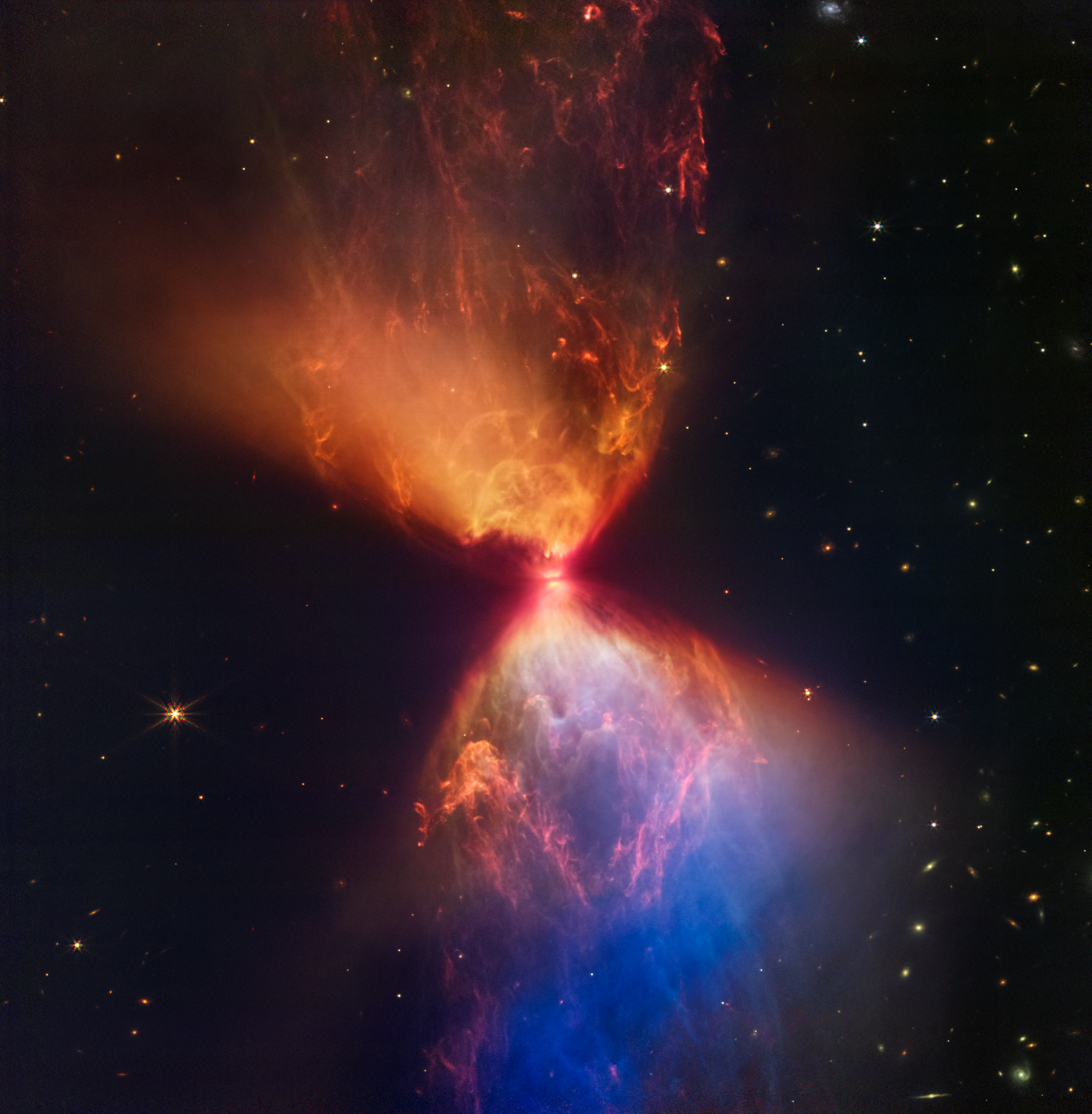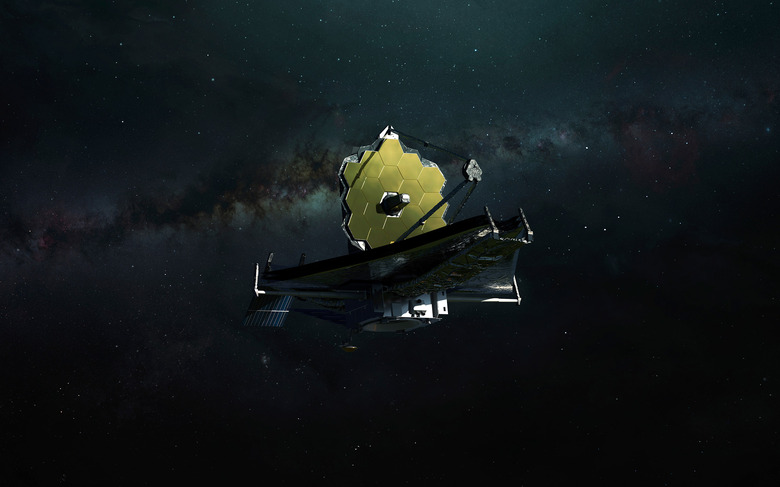James Webb Captures Breathtaking Fiery Hourglass Feeding A Newly Birthed Star
James Webb has captured yet another breathtaking image of our universe. The new image, which NASA shared on Wednesday, is that of the dark cloud L1527, a newly birthed protostar that resides within the Taurus star-forming region of space. The clouds that make up the fiery hourglass shape in space are only visible with infrared light, NASA says.
Because it's only visible using infrared, the protostar is a perfect target for James Webb's Near-Infrared Camera (NIRCam). NIRCam allows Webb to see special frequencies of infrared light, the same frequencies that the gaseous fiery hourglass emits in space. If you look closely at the time, which I've included below, you can also just make out the protoplanetary disk near the star itself.
NASA says that the more prevalent features of the region are the blue and orange gaseous clouds that make up the fiery hourglass in this region of space. These clouds outline the cavities that are created as material from the protostar's growth is expelled, colliding with any surrounding matter. The colors themselves, NASA notes, are a representation of the dust layers between Webb and the clouds.

Despite the chaotic look of this newly birthed protostar, NASA says that it is only around 100,000 years old, relatively young for a new star. As such, it's considered a class 0 protostar, at the earliest stages of its development and formation. It's because of this age that the protostar is still engulfed in a cocoon of dark clouds of dust and gas, similar to those making up the fiery hourglass we see in this part of space.
In the past, James Webb has also captured especially beautiful images of the Orion Nebula, as well as an image of a dwarf galaxy hiding in space near the Milky Way. With these observations, scientists continue to gather more data about our universe, which helps us better understand how new stars and planets form, including why this fiery hourglass in space exists.
